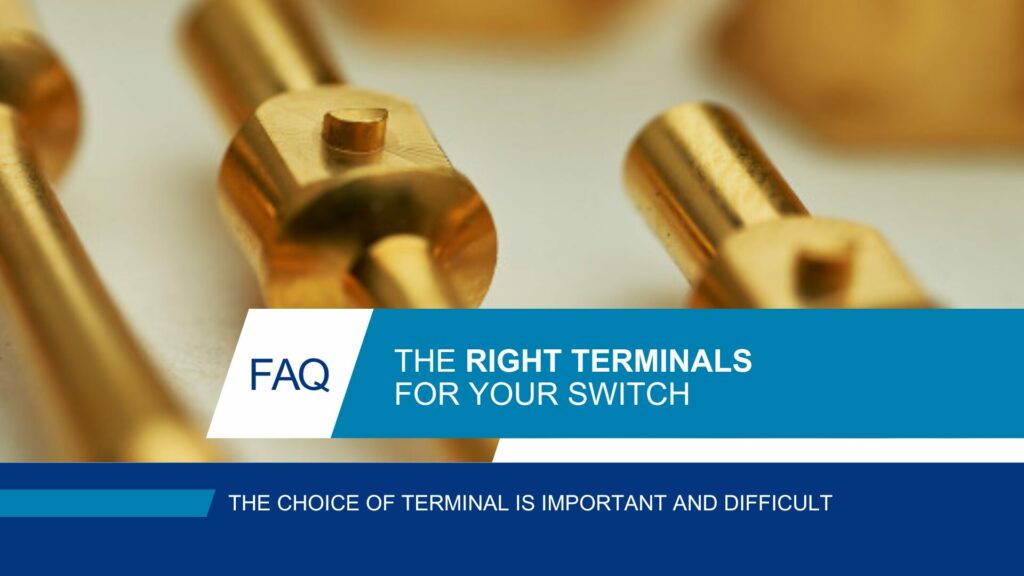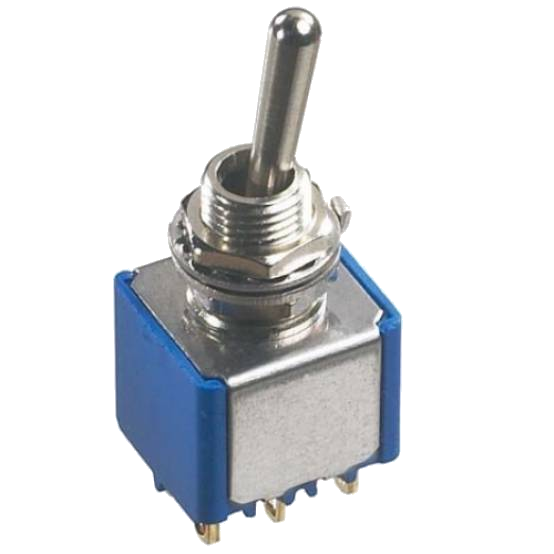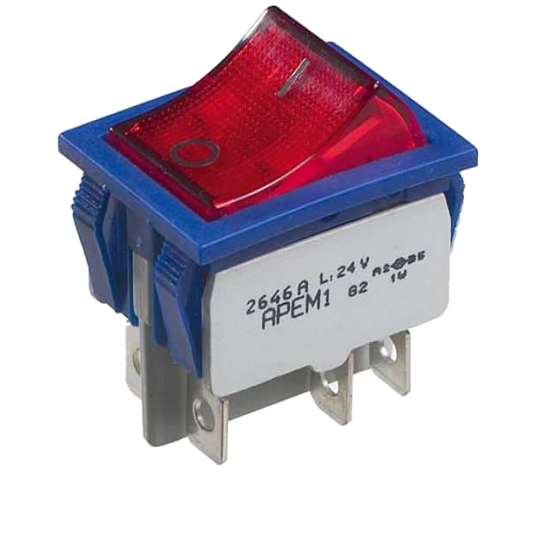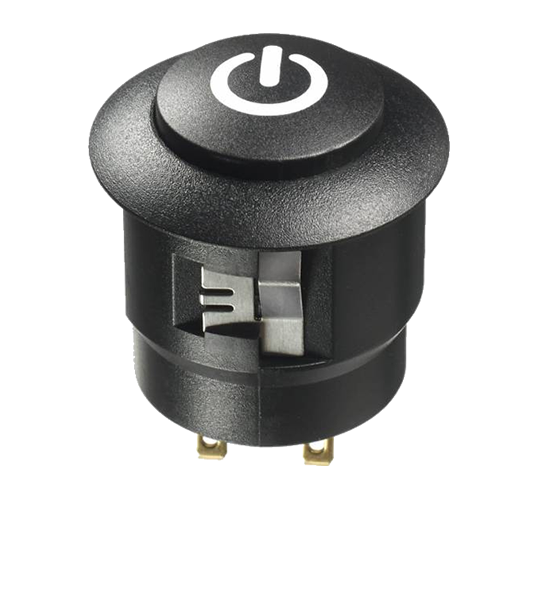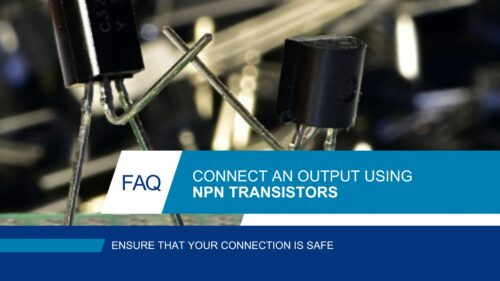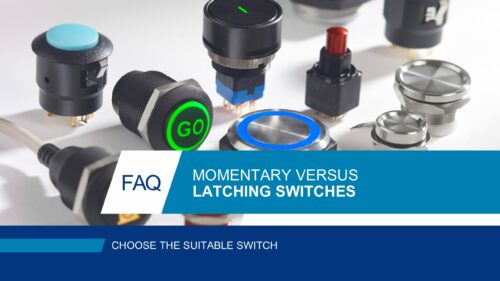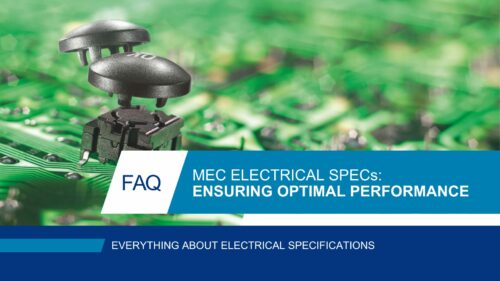Among all the configuration options of a switch, the choice of terminal is probably one of the most important and difficult. There are four terminal types for our switches. PCB Solder lug/quick-connect/screw Flying lead Connector. The terminal option depends on the use that will be made of the switch.
PCB TERMINALS
You can choose through-hole terminals: the terminals go through the PCB and are fixed on the rear with tin soldering (manual or wave soldering). Though providing resistant fixation, this option is less used today. This type of terminals is kept for small series or prototypes.You can also choose SMT terminals designed for surface mount. The terminals are set on a solder paste, then heated to ensure fixation and electrical interfacing. The advantage of this technique is to reduce the pitch between components and allow equipment miniaturization.
SOLDER LUG/QUICK-CONNECT/SCREW TERMINALS
It’s the most common solution. It includes 3 types.
Solder lug terminals
Are the most standard type. The switch is fitted with lugs, to which wires are soldered prior to panel mounting.This means an additional, manual, step in product mounting. For this reason, this terminal type is not adapted for large production runs. However, it remains the best solution for high current ratings (better connection = better dissipation).
Normalized quick-connect terminals
A male-female connection available in 4 standard widths: 1.57, 2.8, 4.7 and 6.35 mm.This very practical connection is used when a small number of wires are to be connected. It certainly is the most required type. However, it is forbidden in some applications like railway transport due to its low resistance to vibrations and tractions.
Screw terminals
It’s a practical and resistant type of connection, either as screw + bracket or as simple screw. Concretely, naked wires are positioned inside the bracket or terminal and fastened by means of a screw.
FLYING LEAD TERMINALS
The switch is directly equipped with wires, which can be grouped in the form of a cable. This type of terminals is preferred in case of total sealing required on the rear of the panel.The wires are embedded in the switch either by low pressure overmolding or by epoxy resin, thus increasing the switch sealing.
CONNECTOR TERMINALS
In this case, the connector is integrated to the switch, allowing direct connection to the equipment.This solution simplifies final assembly.This option is used in many fields and becomes almost compulsory in transport applications. Sometimes, our switches do not feature connector terminals as standard. In this case, we propose connector housings for mounting onto normalized quick-connect terminals.
